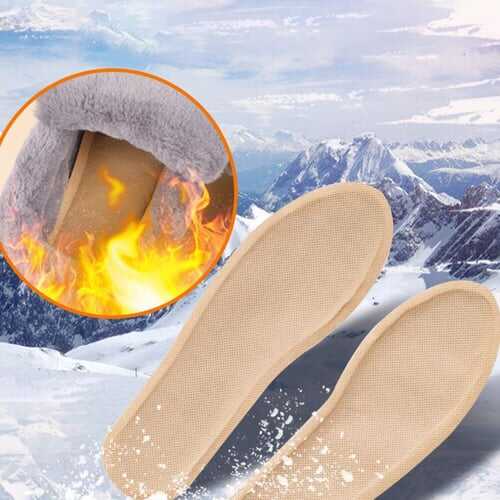Understanding the Science Behind Modern Heat Therapy Solutions
Heat therapy has evolved significantly from traditional hot water bottles to advanced warmer patches that offer precise temperature control and extended heating duration. These innovative heating solutions combine cutting-edge technology with carefully selected materials to deliver consistent warmth where it's needed most. The engineering behind warmer patches represents a perfect blend of safety, comfort, and therapeutic effectiveness.
Modern warmer patches utilize sophisticated design principles that ensure optimal heat distribution while maintaining skin-friendly temperatures. These portable heating solutions have transformed pain management and comfort therapy, making it accessible for everyone to experience professional-grade heat treatment at home or on the go.
Core Components and Materials Engineering
Advanced Heat-Generating Substances
The foundation of warmer patches lies in their revolutionary heat-generating compounds. Iron powder serves as the primary active ingredient, which undergoes a controlled oxidation process when exposed to air. This chemical reaction produces a steady stream of heat that can last for several hours. Manufacturers carefully calibrate the mixture of iron powder with other components like activated carbon, salt, and vermiculite to achieve the desired heating profile.
Quality warmer patches incorporate precise ratios of these materials to ensure consistent heat generation without hot spots or sudden temperature spikes. The composition is engineered to activate gradually and maintain therapeutic warmth throughout the recommended usage duration.
Specialized Layer Construction
The effectiveness of warmer patches depends heavily on their multi-layer construction. The outer layer typically consists of a breathable yet durable material that allows optimal oxygen flow while protecting the internal components. A middle layer contains the heat-generating mixture, carefully sealed to prevent any direct contact with the skin.
The skin-facing layer features medical-grade adhesive and hypoallergenic materials to ensure comfortable wear without irritation. This sophisticated layering system works in harmony to deliver heat therapy while maintaining the highest safety standards.
Safety Features and Temperature Control
Intelligent Heat Distribution Systems
Modern warmer patches incorporate advanced heat distribution technology to prevent localized overheating. The heating elements are arranged in a pattern that promotes even warmth dispersion across the entire patch surface. This systematic approach ensures that users receive consistent therapeutic benefits without the risk of burns or discomfort.
Manufacturers employ thermal imaging during the design phase to map heat patterns and optimize the placement of active ingredients. This attention to detail results in warmer patches that maintain safe and effective temperatures throughout their active period.
Built-in Temperature Regulation
Safety remains paramount in warmer patch design, with sophisticated temperature regulation mechanisms built into the product. The chemical composition is carefully balanced to reach a maximum temperature that stays within therapeutic ranges, typically between 104°F and 113°F (40°C to 45°C). This self-limiting feature prevents the patches from becoming too hot, even during extended use.
Advanced warmer patches also incorporate phase-change materials that help maintain steady temperatures by absorbing excess heat during peak reaction periods and releasing it gradually as the patch cools. This natural thermostat effect ensures consistent comfort and safety.

Application Design and User Experience
Ergonomic Flexibility and Comfort
The physical design of warmer patches prioritizes user comfort through flexible materials that conform to body contours. The patches are engineered to move naturally with the body while maintaining consistent contact for optimal heat transfer. This adaptability ensures that the therapeutic warmth reaches target areas effectively, whether the user is active or at rest.
Manufacturers conduct extensive testing to determine the ideal balance between flexibility and durability, ensuring that warmer patches remain securely in place without restricting movement. The result is a product that provides reliable heat therapy while allowing users to maintain their normal daily activities.
User-Friendly Activation and Application
The activation mechanism of warmer patches is designed with simplicity and reliability in mind. Most patches feature an easy-peel backing that, when removed, exposes the heat-generating materials to air, initiating the warming process. This straightforward design eliminates the need for external heat sources or complicated preparation steps.
Clear indicators and instructions are incorporated into the packaging design to ensure proper application and positioning. Some advanced warmer patches include positioning guides or markers that help users place the patches correctly for maximum therapeutic benefit.
Environmental Considerations and Sustainability
Eco-Friendly Material Selection
Modern warmer patch design increasingly incorporates sustainable materials without compromising effectiveness. Manufacturers are developing biodegradable alternatives for traditional synthetic components, focusing on reducing environmental impact while maintaining therapeutic benefits. This includes using recyclable packaging and exploring natural heat-generating compounds.
Research continues into green technologies that could make warmer patches even more environmentally responsible. Some companies are investigating plant-based adhesives and organic heat-retaining materials as alternatives to conventional synthetic options.
Disposal and Recycling Innovation
Advanced design considerations extend to the end-of-life phase of warmer patches. New developments in material science allow for easier separation of components for recycling, while some manufacturers are implementing take-back programs for used patches. These initiatives demonstrate the industry's commitment to reducing waste and promoting sustainable practices.
Future innovations may include completely biodegradable warmer patches that break down naturally after use, leaving minimal environmental impact while delivering the same therapeutic benefits users expect.
Frequently Asked Questions
How long do warmer patches typically maintain their heating effect?
Most warmer patches are designed to provide consistent heat for 8 to 12 hours, depending on the specific product design and environmental conditions. The duration is determined by the quantity and composition of the heat-generating materials used in the patch.
Are warmer patches safe to use while sleeping?
Warmer patches are engineered with safety features that make them suitable for overnight use. However, it's important to follow the manufacturer's specific guidelines and avoid applying patches directly to sensitive skin areas. The built-in temperature control mechanisms help prevent overheating during sleep.
Can warmer patches be reused once activated?
Most warmer patches are designed for single use due to the nature of the chemical reaction that generates heat. Once the iron powder oxidation process begins, it cannot be reversed or paused. Some manufacturers are developing reusable alternatives, but these typically use different heating technologies.
What makes some warmer patches more effective than others?
The effectiveness of warmer patches depends on several design factors, including the quality of heat-generating materials, layer construction, heat distribution technology, and adhesive properties. Premium patches often feature better temperature control, longer duration, and more consistent heat distribution throughout the active period.

